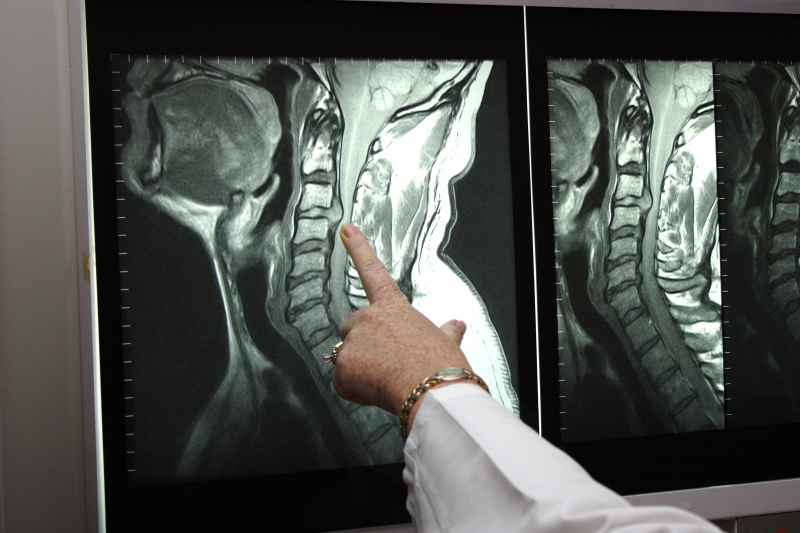If you have never received medical imaging, your first x-ray, MRI, or CT scan can seem intimidating. As with most things, being armed with a little information about the process can make the experience more enjoyable. Read on to learn what to expect when you go to an imaging center, and what you can do as a patient to ensure that the visit goes smoothly and you receive the best quality imaging.
What to Expect: MRI
While an MRI may seem daunting, there is usually no special preparation needed for this scan. Unless you are specifically instructed otherwise, you may eat and drink as normal prior to arriving at your appointment and can continue to take your normal medications. Your doctor should let you know if any medications should be stopped, and you should let your technologist know about any medications you are on. The biggest thing to know about MRIs is that you won’t be allowed to wear anything metallic. Leave any valuables at home, and it is best not to bother with makeup on your scan day, as some makeup contains trace amounts of metals. The powerful magnet involved in an MRI can attract any metal on or in your body, and items that should be removed to prevent injury include:
- Jewelry
- Bobby pins
- Glasses
- Watches
- Wigs
- Dentures
- Hearing Aids
- Underwire Bras
- Silver-containing underwear
- Money clip
- Cell phones
- Pens or paper clips
- Keys
- Shoes
- Belt buckles
- Any clothing with zippers, snaps, hooks, or metal threads
- Coins
- Credit cards or any cards with magnetic strips
While this seems like a long list, the basic rule, again, is just NO metal. Your technologist will be able to ensure that you don’t have any metal on, and remind you of these items that need to be removed. If you are pregnant, or think you could be pregnant, you must notify both your doctor and the technologist, as MRI can be contraindicated during early pregnancy. You also will need to consider any metal that you may not be able to take off, including:
- Pacemaker
- Implantable cardioverter defibrillator (ICD)
- Tattoos
- Neurostimulators (TENS-unit)
- Insulin pump
- Bullet wounds or shrapnel
- Aneurysm clip
- Any metal fragments near the eye
- Cochlear implants
- Artificial heart valves
- Vascular stent
- Prosthesis
- Dentures or teeth with magnets
- Medication patch that contains a metal foil
Again, your technologist will go over these potential sources of metal and ask you questions to make sure that it is safe for you to have the scan. You should also tell your technologist if you are diabetic, have had a history of kidney problems, or have allergies to iodine or gadolinium, as these can affect scans involving contrast dye.


During the Scan
Expect your MRI to last up to one hour (although scan times can vary). You will change into a gown and if a contrast dye is being used you will have an IV catheter inserted into your arm. You will have to lie still during the scan, and you might be asked to hold your breath up to 30 seconds at a time. One of the most important things to know before having an MRI is that if you are using a traditional closed MRI you will be in a very small, confined space that causes claustrophobia in some patients. Although the space is small, the ends are open, and you will be able to communicate with your technologist throughout the scan. There will be loud noises, often described as banging, during the scan that can be disconcerting if you don’t know they are coming. One great option that Touchstone Imaging offers is the open MRI which leaves the sides open and is great for patients who are stockier or have claustrophobia. If you have had fears about having an MRI due to the space constraints, consider an open MRI as a great option. The most important thing to remember while you are being scanned is to relax. Your images will turn out clearer, and your scan will most likely be shorter if you can just breathe, relax, and lie still.
What to Expect: CT Scans
Maybe it is a CT scan that you have been recommended by your doctor. You should know that a CT scan, also known as a CAT scan, uses radiation and takes a combination of x-ray images to create computer-generated images of organs, bones, and other tissues. A CT scan can show more detail than just a basic x-ray, and offers helpful information for diagnosis. Although a CT scan does not use magnetic resonance for imaging, you still will be asked to remove metal objects that can interfere with the test results. You also may need to limit eating and drinking prior to your scan if you are getting a contrast dye either orally or by injection. You will be advised whether you need to limit food and drink. You will probably change into a gown, depending on what part of your body is being scanned. A CT scan is not as confined as an MRI, and you will lie on a narrow table that slides through a tunnel that scans as it rotates around you. You may hear buzzing, clicking, or whirring, and will need to hold still because movement can blur the image. CT scans can be very short, or up to a half-hour in length. When you get a CT scan done with contrast it helps illuminate the soft tissues in your body and highlights the blood vessels and organs. If you are given a contrast dye you will be told to drink plenty of fluids after you leave to clear the material from your body. The CT scan process is usually short and painless, and you can quickly return to your normal routine.
What to Expect: Ultrasound


What to Expect: Arthrography
You will most likely be ordered an MRI arthrogram to diagnose joint pain issues. This scan uses a contrast dye called gadolinium that helps highlight the joints to obtain better quality images, and to see how the joint moves in real time. Common ailments that require arthrography include rotator cuff tears, abnormal growths or cysts, adhesive capsulitis, and other issues affecting the tendons and joints. Because the latter portion of an arthrogram includes an MRI scan, you will not be able to have any metal on your body. Your doctor will instruct you on eating and drinking, but usually, you will be asked to not drink fluids two hours prior to your arrival. The first part of the scan will involve applying a local anesthetic to the area where the contrast dye will be injected. You then will proceed to have an MRI scan done. After your exam you may experience swelling or discomfort around the injected joint—this is normal and usually will go away within 48 hours.
What to Expect: X-Ray


What to Expect: Bone Density (DXA) Scan
A bone density scan is quick, painless and noninvasive. Used to examine your bone mineral content, these scans can diagnose osteoporosis, and are the standard for measuring your body mass index, or BMI. There is no anesthesia, and the amount of radiation used is very small. You will lie on your back on an open table (not a confined space) and there is little to no special preparation, aside from not taking calcium supplements for 24 hours before your exam. After this quick test, you will be able to resume normal activities.
Being armed with the knowledge of how each of these scans is performed will hopefully alleviate any anxieties you have and better prepare you. Medical imaging is extremely important in diagnosing and monitoring disease, finding the cause of chronic pain, and developing treatment plans. One of the best ways that you can prepare for medical imaging is to know that you have a choice when it comes to where you have your imaging done. Hospitals are not your only choice, and when you are armed with the knowledge that freestanding imaging centers can save you hundreds, or thousands, of dollars, you are able to make the best medical choices. Touchstone Imaging has convenient locations in Texas, Colorado, Oklahoma, Nebraska, Florida and Arkansas, and we can assist you with any MRI, CT, x-ray, ultrasound, or arthrography services you may need—contact us today!


